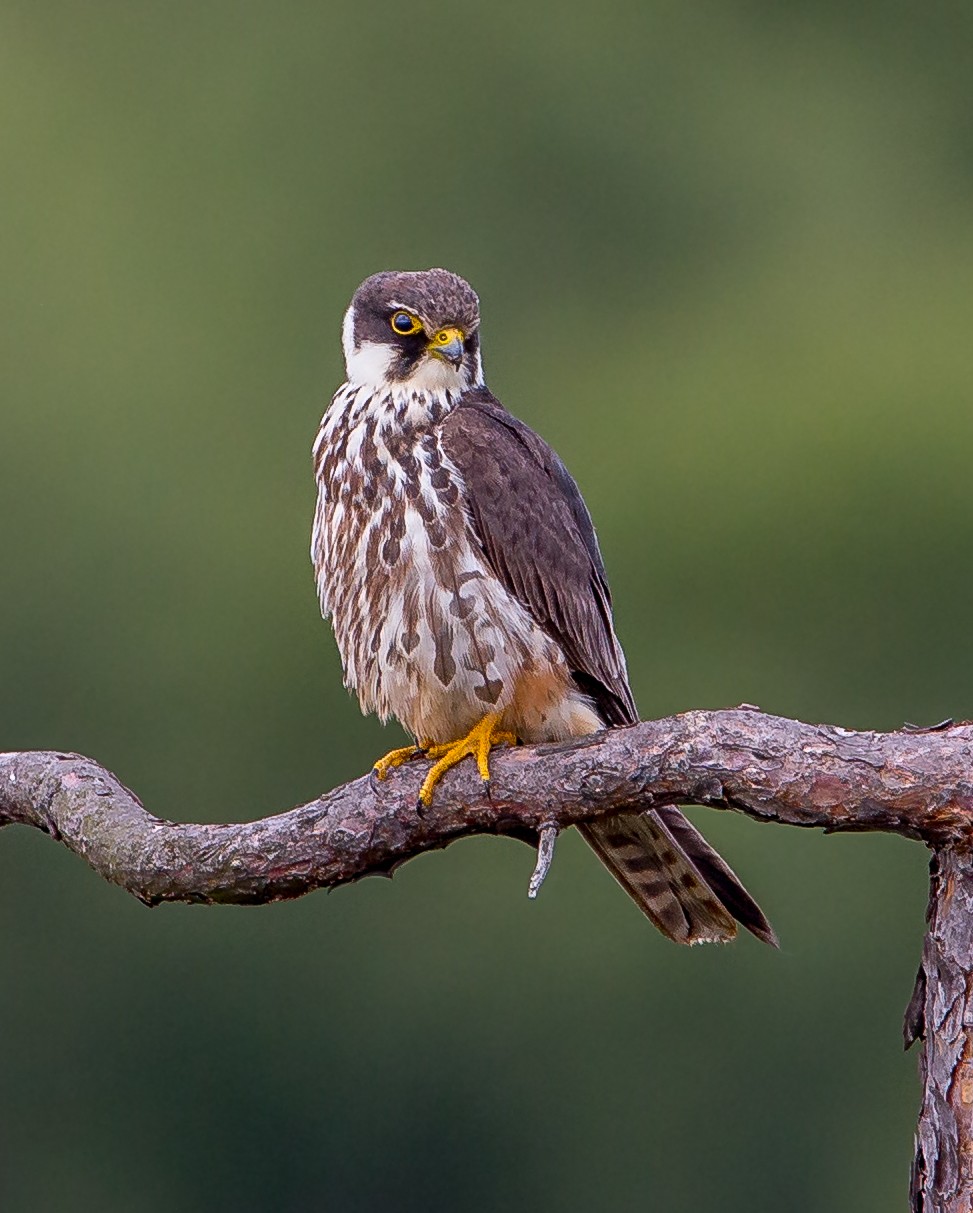Eurasian Hobby
A species of True Falcons Scientific name : Falco subbuteo Genus : True Falcons
Eurasian Hobby, A species of True Falcons
Botanical name: Falco subbuteo
Genus: True Falcons
Content
Description People often ask General Info
Description
Adults are slate-grey above with a dark crown and two short black moustachial stripes. The throat is unstreaked white, thighs and undertail coverts are unstreaked rufous and rest of the underparts are whitish with black streaks. Close views enable the red "trousers" and vent to be seen. Sexes are similar. Juveniles are generally much browner, with scaled upper parts and streaked buffy thighs and undertail coverts. The hobby has a distinct first-summer plumage. This falcon is 29–36 cm (11–14 in) in length with a wingspan of 74–84 cm (29–33 in) and a weight of 175–285 g (6.2–10.1 oz). 
Size
28 - 33 cm
Colors
Black
Gray
Orange
Life Expectancy
11 years
Nest Placement
Tree
Feeding Habits
Eurasian Hobby's diet primarily consists of large insects, small birds, and bats, which it catches in flight. It showcases unique aerial agility, catching fast-flying prey like swallows and swifts, and has the distinctive behavior of eating while flying.
Habitat
The eurasian Hobby thrives in open wooded areas, woodland edges, and countryside landscapes featuring fields with hedges or isolated tree clumps. Its habitat encompasses a range of environments from semi-arid regions to boreal forests, with a preference for wetlands during pre-breeding. Commonly found at lower elevations in plains or foothills, eurasian Hobby sometimes ventures into mountainous terrains, reaching up to 4000 m in India. Winter habitats include Brachystegia woodlands and savannahs, and this species can occasionally adapt to suburban and urban settings.
Dite type
Carnivorous
People often ask
General Info
Feeding Habits
Bird food type
Behavior
It is a bird of open country such as farmland, marshes, taiga and savannah. They are widespread in lowlands with scattered small woods. It is an elegant bird of prey, appearing sickle-like in flight with its long pointed wings and square tail, often resembling a swift when gliding with folded wings. It is fast and powerful in flight and will take large insects, such as dragonflies, which it transfers from talons to beak and eats while soaring slowly in circles. It also captures small bats and small birds in flight. Its speed and aerobatic skills enable it to take swallows and even swifts on the wing, and barn swallows or house martins have a characteristic "hobby" alarm call. It is known to harass swallows while they are roosting and dispersing from roosts. When not breeding, it is crepuscular, hawking principally in the mornings and evenings. While on migration, they may move in small groups. Hobbies nest in old nests of crows and other birds. The tree selected is most often one in a hedge or on the extreme edge of a spinney, from where the bird can observe intruders from a considerable distance. It lays 2–4 eggs. Incubation is said to take 28 days and both parents share in this duty, though the female does the greater part. It is a very bold and courageous bird and was used in falconry, trained to hawk birds like quails, larks, hoopoes, drongos, etc. 
Distribution Area
This species breeds across Africa, Europe and Asia. It is a long-distance migrant, wintering in Africa and Asia. 
Species Status
Not globally threatened.
Scientific Classification
Phylum
Chordates Class
Birds Order
Diurnal Birds of Prey Family
Falcons and caracaras Genus
True Falcons Species
Eurasian Hobby 